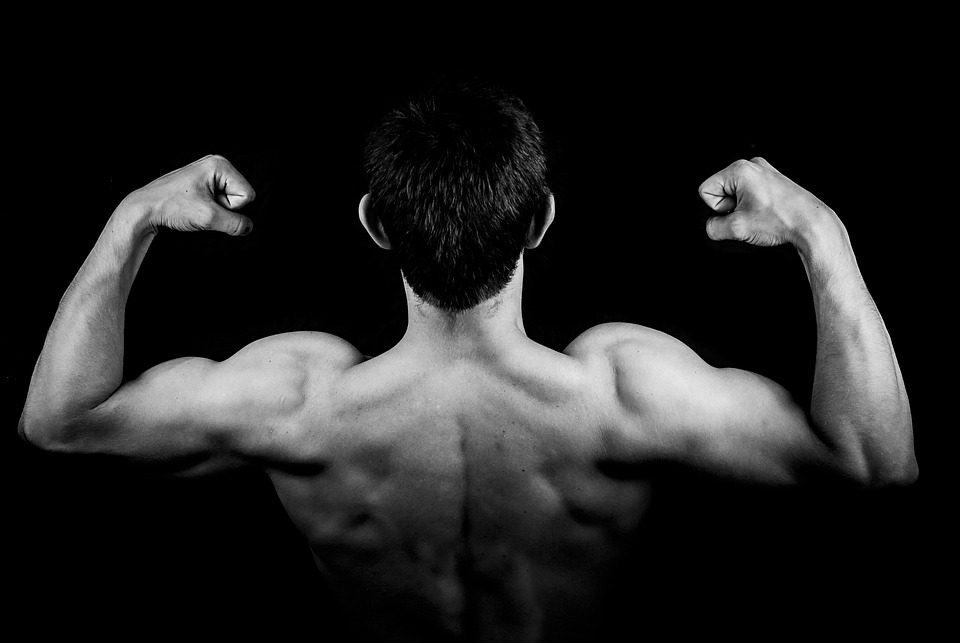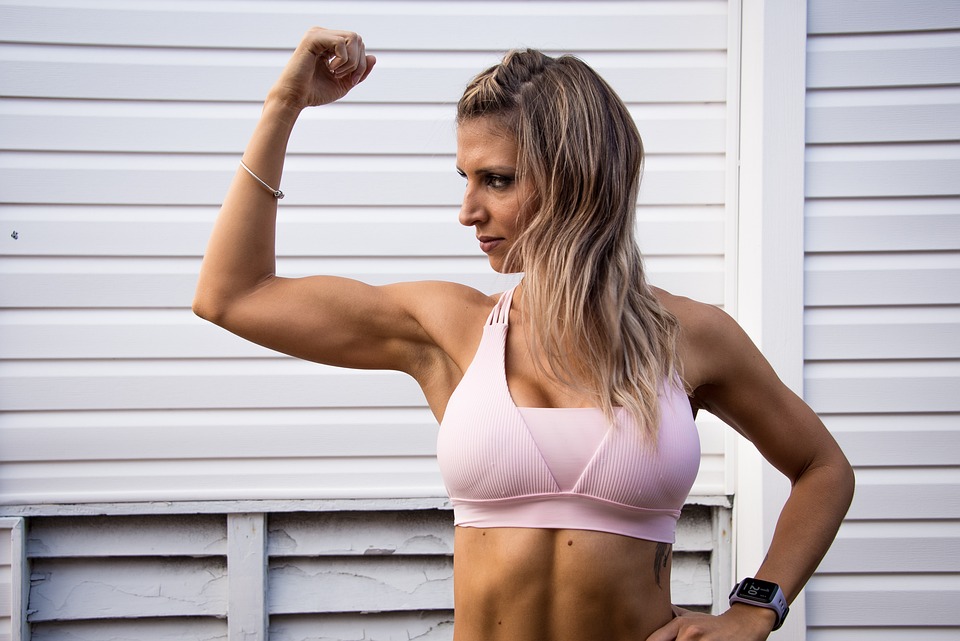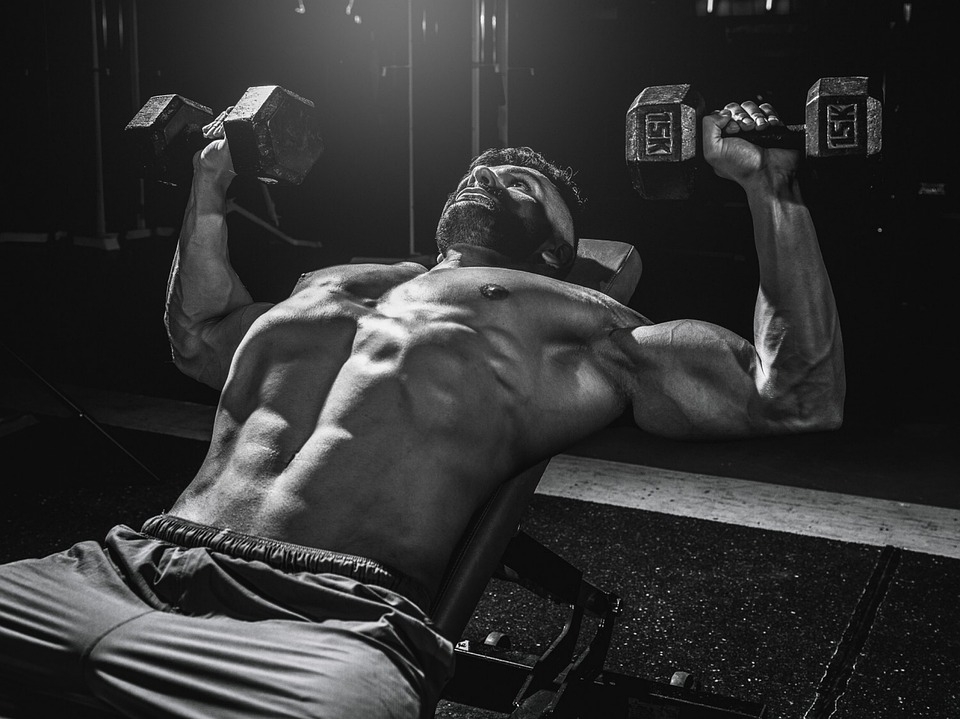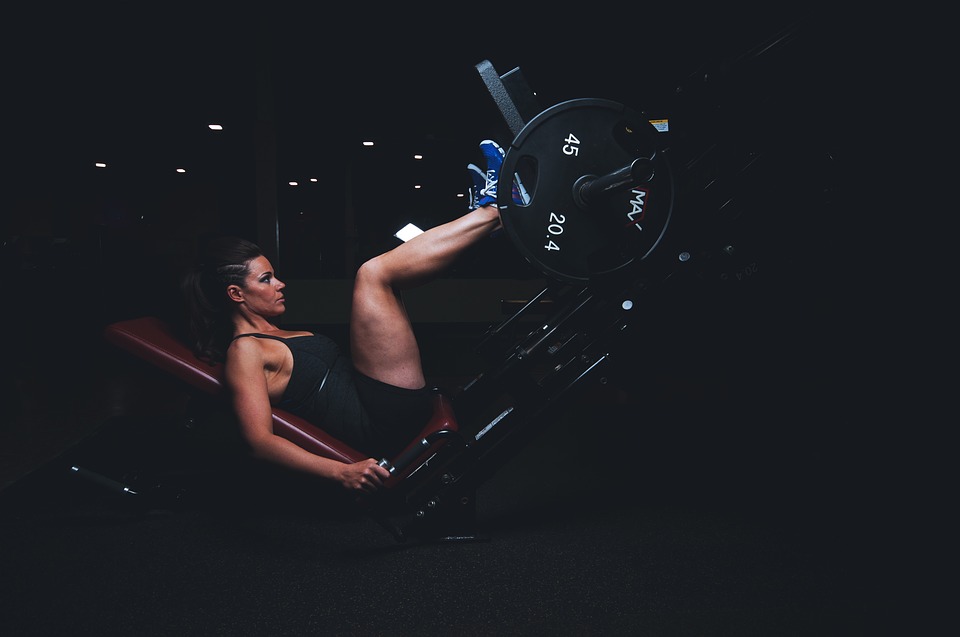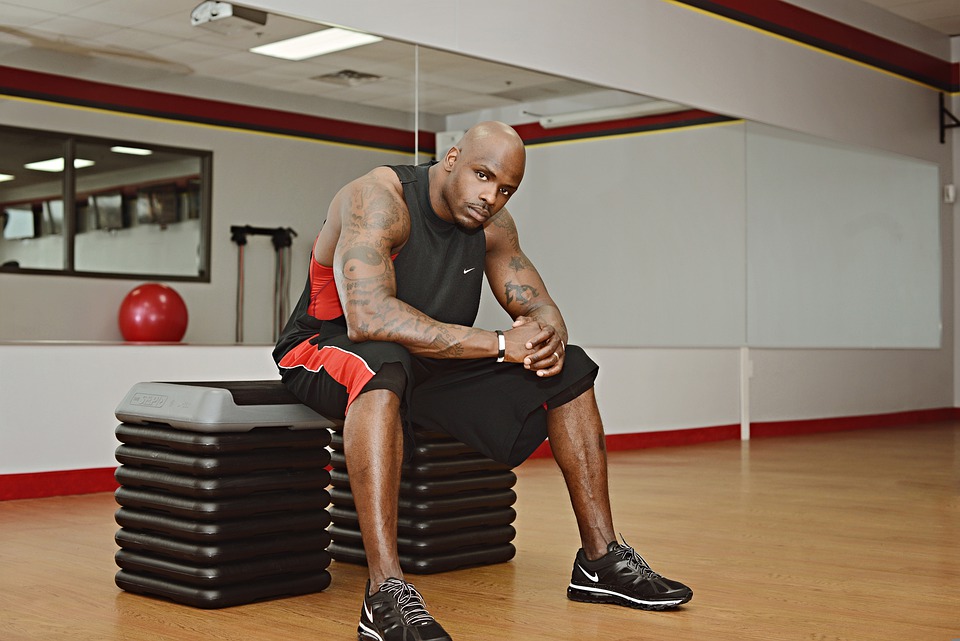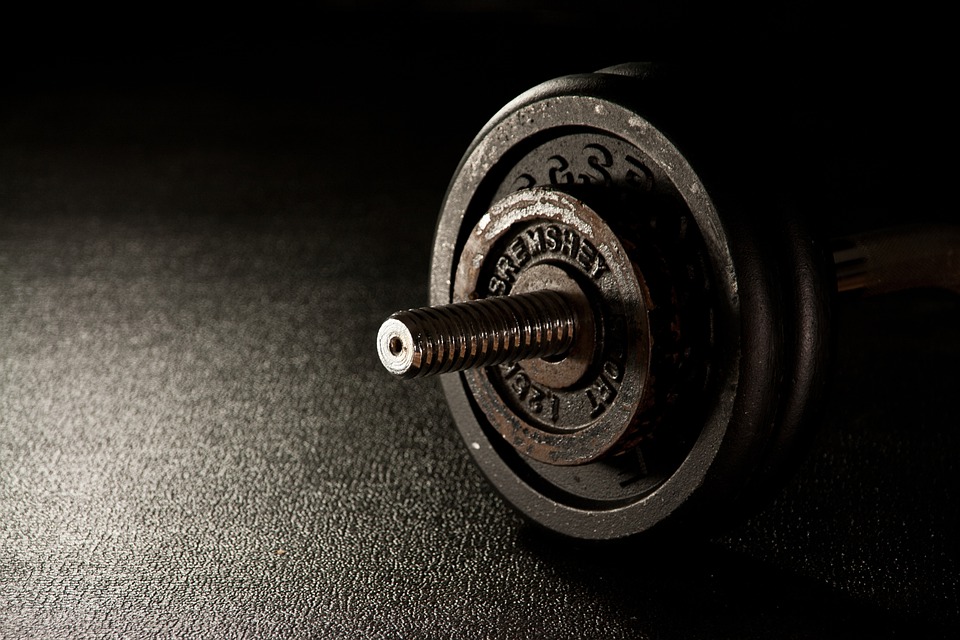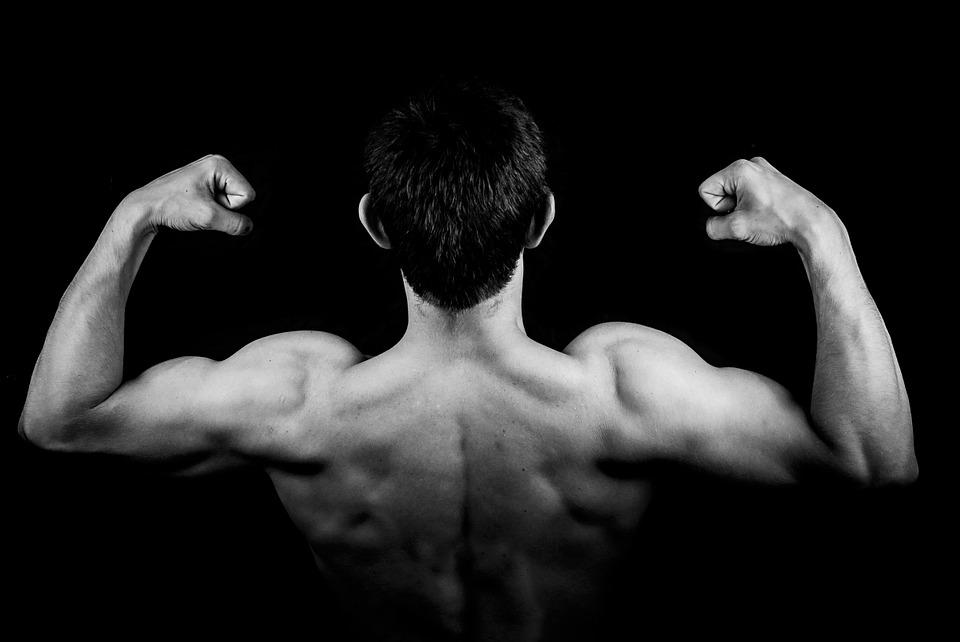
Large biceps indicate that the person has worked hard at the gym. The biceps are small muscles, but it takes time, knowledge, and effective planning to make them larger. Additionally, the biceps flex the elbow, which is a significant movement. For example, it allows someone to pick up a child or curl a can of beer towards their mouth. Therefore, the biceps are not only aesthetically pleasing but also serve an important purpose.
The biceps is a simple muscle to train– all you need to do is curl, curl, and curl some more. However, some exercises are better at building bicep muscle than others. To help you determine which exercises are best for you, we’ve compiled a list of 14 effective biceps exercises, as well as some additional information on the biceps muscle and how to incorporate bicep training into your workout routine.
Barbell Or EZ-Bar Curl
The shoulder-width curl is the most effective way to target both the short and long heads of the biceps equally. If you want to slightly change the emphasis, you can alter grip width (wide for the short head, narrow for the long head). You can also add more weight for a more challenging workout.
If this is the only biceps exercise you’re going to do, then you need more reasons.
We’re all for diversity in our workouts. Both variants of the barbell produce greater activity than dumbbell curls, however “The small difference between [barbell] and EZ variants… makes the choice between these two exercises a matter of subjective comfort.”
Curls are best done at the beginning of a biceps workout, with a weight that is challenging but manageable for 6-8 reps. A common mistake is to rock the body excessively on this movement; it should be kept strict, especially when a heavier weight is being used.
Cable Curl
The two movements may appear similar at a first glance, but closer inspection reveals that they are quite different. For starters, they are both bilateral movements that require you to take a shoulder-width, underhand grip on the bar. However, what makes the cable exercise unique is the angle of loading, which provides constant tension on the muscle throughout the full range of motion.
You cannot relax at the bottom or the top which creates more time under tension. Plus, there are numerous handle options and body positions depending on the gym you are in.
If you are including the dumbbell curl in your workout, choose a weight that is challenging for 6-10 reps per set. If you are doing the dumbbell curl later in your workout, go for 8-12 or more reps per set.
Dumbbell Curl
Although you can do the moves in the same way with a barbell curl, we don’t recommend it. The real value of dumbbell curls is that they offer more options to work different muscle groups. For example, you can do them standing or seated, with both arms or alternating, rotating your wrists into Zottman curls to work on your forearm muscles or twisting that pinky up to focus purely on the biceps.
If you are doing these after barbell or cable curls, you should emphasize the difference by performing Zottmans, or take seated curls to fatigue and then extend the set by switching to unilateral curls.
If you feel your reps getting sloppy, really emphasize the negative portion of the lift. It’s been shown that the eccentric-focused reps can produce higher levels of force than the concentric, even when you’re fatigued.
Chin-Up
Bodyweight exercises like the chin-up are great for inducing muscle growth of the biceps and back. If you have a door-mounted pull-up bar, you can do sets of chin-ups without any other equipment. When you use your own bodyweight as resistance, the biceps are often challenged with more weight than they could lift using a barbell. However, people often perform chin-ups incorrectly, using their shoulder and grip muscles instead of their biceps.
How to Do the Chin-Up
To do a chin up, grip a bar with your palms facing you and your hands shoulder-width apart, or slightly wider. From a dead hang, squeeze your shoulder blades together and pull your body up until your chin is at or above the bar.
Hammer Curl
With the hammer curl, the person lifting the dumbbells has their palms facing each other. This is a more comfortable position and allows the person lifting to hoist more weight. This move also targets the biceps brachialis and brachioradialis (outer biceps and forearm) for more arm thickness.
How to Do the Hammer Curl
Stand with a dumbbell in each hand, wrists facing each other. Keep arms tucked in at sides and flex elbows to curl dumbbells up towards shoulders. Lower back down with control.
Incline Dumbbell Curl
To perform an incline dumbbell curl, lie back on an incline gym bench, curling the weight up. This variation is more effective because it takes the momentum out of the equation and creates a longer range of motion.
How to Do the Incline Dumbbell Curl
You should sit on an incline bench that is angled at about 60 degrees. You should have a dumbbell in each hand and your arms should be fully extended. You should curl the weight up to your shoulders without moving your shoulders. You should hold the top of the movement for about a second and then slowly lower the dumbbells with control.
Facing-Away Cable Curl
The facing-away cable curl is a move that can be done by standing between the two cables of a functional trainer or cable tower, facing away from them. This setup allows you to take advantage of the benefits of the incline dumbbell curl, such as a greater stretch due to a longer range of motion, while also experiencing the unique resistance of the cables, which keeps tension on the muscle throughout the entire movement.
How to Do the Facing-Away Cable Curl
Attach D-handles to the lowest setting of the cable pulleys. With one handle in each hand, tense your upper back and let your arms hang so they’re fully extended. Curl the weight up towards your shoulders without moving your shoulders. Hold the top of the movement for a second, then slowly lower the handles with control.
Reverse-Grip Bent-Over Row
The bent-over row with a supinated grip is a traditional exercise for the back, but it also works the biceps more than other exercises. You can lift more weight than other biceps exercises. This exercise will help build muscularity in the back and the biceps.
How to Do the Reverse-Grip Bent-Over Row
Place your underhand grip on the barbell at about shoulder-width apart. Lean forward in a bent-over position with your back flat and chest up. Pull the barbell up to your stomach using both your back and arms. Lower the weight under control and repeat for desired reps.
Concentration Curl
The purpose of the concentration curl is to feel your biceps working. You sit on a bench, with your elbow resting on the inside of your thigh, and curl a dumbbell from full extension to contraction. Lifting with one arm at a time means you’re doing more work overall, so you’ll burn more calories and allow your weaker arm to catch up. The isolated curling position really lets you focus on your biceps as you curl a light dumbbell.
How to Do the Concentration Curl
Sit on a bench and set your feet wide apart so that your arm can hang in the middle, with your elbow resting on the inside of your thigh. With a dumbbell in hand, slowly curl the dumbbell upward at a controlled tempo, concentrating on contracting your biceps to move the load. At the top of the movement, flex your biceps as hard as possible, then slowly lower the load. The key is to not lose tension on your biceps at any point in the range of motion.
High Cable Curl
To perform this variation, set the cables just above shoulder level and curl them while keeping your shoulders flexed and palms facing up. Curling from a high, extended arms position is thought to target the shorter biceps head, which is what creates the desired biceps peak.
How to Do the High Cable
Attach D-handles to a cable pulley set to shoulder height. Grab the bar with a supinated grip, keeping tension on the biceps, and slowly raise the load until your arms are extended. Slowly lower the load back to the starting position, maintaining shoulder position and not allowing your elbows to dip.
Cable Rope Supinating Curl
and gets your brachioradialis — the “outer bicep head” — more involved. This variation of the low cable curl has the lifter curl and twist a rope attachment, focusing on both the supination and elbow flexion functions of the biceps brachii muscle. Because the person is standing farther away from the machine, their biceps will be under tension for the entire movement. Twisting their hands inward toward their face will create more biceps tension and also gets the brachioradialis muscle more involved.
How to Do the Cable Rope Supinating Curl
Stand in front of a single cable on a functional trainer or cable tower and set it to a lower setting with the rope attachment in your hands. To complete the curling motion, start by flexing your elbows and bringing your hands up toward your shoulders. Around one-third of the way up, rotate your hands so they face up and continue to curl up. The key to making this exercise more challenging is to wait to supinate until you’re a third of the way into the rep so the muscles responsible for supination have to work while the resistance is on them.
Preacher Curl
There are many variations of preacher curls, and every experienced bodybuilder has their favorite. No matter which version you do, you’ll get an intense pump, especially if you have a quality pre-workout or pump supplement running through your bloodstream. In fact, this old-school exercise can be almost enough for a full biceps workout, perhaps with something like hammer curls added.
The cable is the best implement to use when working on biceps because it provides the most muscle activation during the lower third of the movement.
The bench press is a great exercise to do during your workout, especially if you are looking to focus on your arms. This exercise is strict and doesn’t allow for much cheating, so it’s best to do it later on in your workout. For best results, aim for 8-12 reps per set.
Drag Curl
You will not be able to curl the barbell as high as you traditionally would because you are pushing your elbows back and keeping the bar close to your torso.
Kris Gethin’s favorite biceps-building “hack” is to use a Smith machine, because the bar moves vertically up and down. This is effective because it can be done on a Smith machine.
You can program a reverse curl like you would any other barbell curl, making it heavy in the beginning or lighter at the end of your workout. If you want to make it more difficult, extend the negative portion of the rep to 3-5 seconds per rep. Repeat for 5-8 reps, perhaps having a spotter help you with the concentric (lifting) portion as needed.
TRX Suspension Curl
Suspension training is a great way to work your biceps without needing access to free weights, cables, or machines. You can adjust the difficulty of the exercise by changing your body position – the more upright you are, the easier it will be. Using your bodyweight as resistance, you can also increase the time your biceps are under tension by changing the tempo of your reps.
How to Do the TRX Suspension Curl
To do the TRX suspension exercise, first secure the TRX suspension, then grab the handles and take a few steps forward. Lean back and curl your body weight up. To make the exercise more difficult, adjust your body position so you’re leaning back further. This will make it so you’re resist more of your body weight during the movement. If you want to make the exercise easier, position your body more upright.

